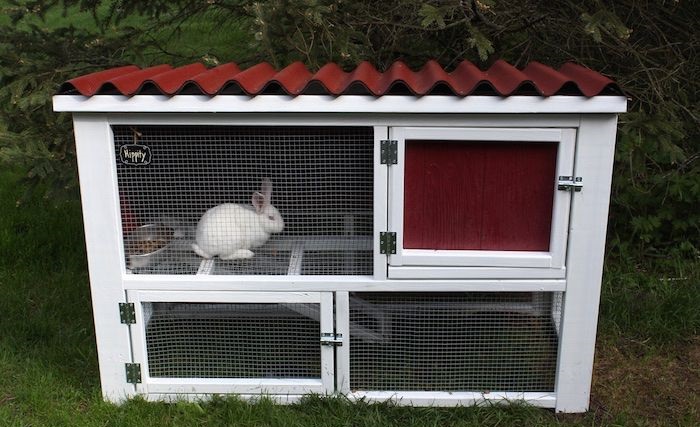Creating a DIY rabbit hutch can be an exciting and rewarding project. With a bit of planning, creativity, and effort, you can design a hutch that perfectly suits your rabbit’s needs.
In this comprehensive guide, we’ll explore the process of creating your own DIY rabbit hutch from start to finish.

Understanding Your Rabbit’s Requirements
Every rabbit is an individual with distinct needs. The first step in planning your DIY rabbit hutch is to assess the specific needs of your rabbit.
Read Also:
Size Considerations
Rabbits need ample space to move around, play, and exercise. As a general rule, the hutch should be at least four times the size of your rabbit when they’re fully stretched out. If you have multiple rabbits, you’ll need to increase the size accordingly.
Breed-Specific Needs
Different breeds have different needs. Larger breeds will require more space, and certain breeds may require specific features for their comfort and health.
Choosing the Perfect Location
Where you place your hutch is crucial. It should be in a sheltered, shaded area to protect your rabbit from extreme weather conditions and direct sunlight.
Outdoor vs. Indoor Hutches
Whether you choose to place your hutch indoors or outdoors depends on several factors. Outdoor hutches will require more weatherproofing and security measures, while indoor hutches may need more consideration regarding cleanliness and home aesthetics.
Material Choices: Safety and Durability
When selecting materials for your DIY rabbit hutch, choose ones that are safe, non-toxic, and durable. Pressure-treated wood can be harmful to rabbits, so opt for untreated wood instead.
Wire Mesh
Wire mesh is a popular choice for the walls of the hutch as it allows good ventilation. However, the mesh’s gaps should be small enough to prevent your rabbit from sticking its head out and potentially getting stuck.
Flooring
Rabbits have delicate feet that can be injured by wire flooring, so a solid floor is a must. You can use a piece of plywood, which should be covered with a soft material like hay or a washable blanket to provide comfort.
Designing the Hutch
Creating Separate Areas
A well-designed rabbit hutch should include separate areas for sleeping and playing. You might consider adding a second level to the hutch to increase the available space without increasing the hutch’s footprint.
Access for Cleaning
Cleaning the hutch regularly is vital for your rabbit’s health. Design your hutch with a door or opening that makes it easy to reach all parts of the hutch for thorough cleaning.
Finalizing the DIY Rabbit Hutch
Checking for Safety
Once your DIY rabbit hutch is complete, do a thorough check for any potential hazards. Make sure there are no sharp edges, and all the latches are secure.
Maintaining the DIY Rabbit Hutch
Once your hutch is complete, its upkeep is important. Regular cleaning, along with periodic checks for wear and tear, will keep the hutch safe and comfortable for your rabbit.
Read Also:
Conclusion
A DIY rabbit hutch is more than a simple housing unit for your rabbit—it’s a labor of love. While it requires time, effort, and resources, seeing your furry friend enjoy their custom-made space is truly rewarding.
Always remember that the key to a successful DIY rabbit hutch is thoughtful planning, careful construction, and regular maintenance. Happy building!
























